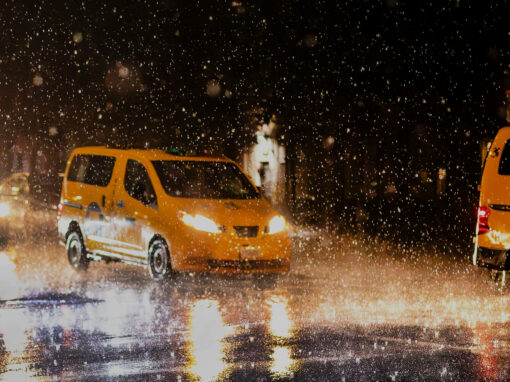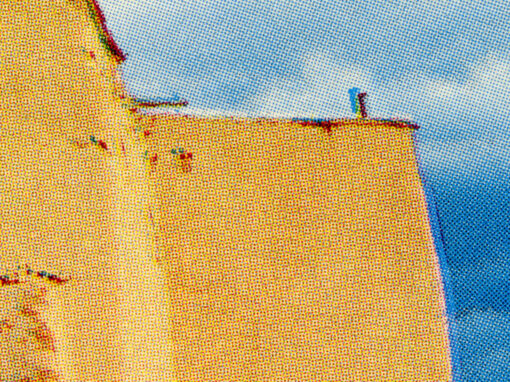I am sure we have all had this experience.
We see an image, and something about it calls to our heart, our soul and our attention. In truth, we have very little idea what we’re looking at. But there is something in there we find resonant, and so this image leads to a wondering. This wondering leads to more images, which lead to more questions, which lead to more images, and suddenly the hours disappear in the happy pursuit of an expanding personal universe.
“Nomadic Odyssey” by Bharat Patel
Self-published, 2023
Review by W. Scott Olsen

Photography is brilliant at that first invitation, that visual spectacle which leads to a very simple and yet profound what in the world is that? I can’t tell you the number of hours I have spent happily learning about stuff which earlier in that day I would have told you has no relevance to my life whatsoever. But suddenly, through the talent and the passion of an artist, I’m caught up in the enthusiasm and the curiosity. I could be learning about nuclear physics, undersea life, and ancient dances in Mesopotamia. It doesn’t really matter.
Actually, that’s wrong. It matters completely, unequivocally, intimately, and deeply. We are, I believe, a curious species. And when we find energy in something beyond our experience, we go chasing it. Our curiosity defines us. Our curiosity is the first step toward empathy.


The nomadic communities of India are not part of my daily routine, but I’ve spent the last few hours learning about them because of the brilliant and talented photography of Bharat Patel and his book Nomadic Odyssey. Here is a bit of humanity beyond what I knew or imagined, and Patel’s work has made them present, specific, wonderful, and troubling.
In an essay within the book called “Stateless Communities” by Mittal Patel (no relation to Bharat), who runs an NGO called Vicharta Samunday Samarthan Manch (VSSM), which works to improve the lives of nomadic communities, she writes:
For centuries, nomadic tribes sustained themselves through their own occupational specialties. The settled populace depended on these nomadic communities for their services. Until just a few decades ago, these communities were still serving the villagers. Sarania communities traveled from village to village sharpening knives and tools. The Kangasia community brought in rosewood from the forest and made combs. Basket Weaving was especially of the Vaansfoda people. Domestic stone mills were made by the Ghantiya Salat and provided both the rich and the poor with an essential tool for grinding grains…
As well as offering products and services, nomadic communities provided entertainment to people in the villages and towns. The Nat and Mal performed historical and mythological stories for the audiences. The Bhavaiyas performed folklore and sang devotional songs at a time when television was non-existent.


Now, the essay goes on to say, these traditional communities are struggling to survive. In fact, these communities have been branded as criminals. They are outcast, unwelcome and struggling.
And if photography does anything more brilliantly than other art forms, it gives a human face to an abstract idea.
Bharat Patal writes in a short essay called “Bringing the Unseen into Focus”:
Documenting in these nomadic tribes and denotified tribes (known as NT-DNT) is an evolution of my work photographing underprivileged women workers in the informal or casual sector and brick kiln workers in India. Over many years of traveling around the country, I observed that these people and, later, the NT-DNT, were the poorest and most marginalized communities of all.
He concludes the essay by saying:
My aim in creating this book is to use photography to capture and assimilate the information I have gleaned from my research. I hope that these photographs will serve as a visual record of NT-DNT life in India today.


Bharat Patel is a talented and insightful photographer. The images, most (but not all) of them black and white, are documentary work at its best. There are portraits, street scenes, celebrations, mourning, people at work, children at play, and the work is always sympathetic. The images build understanding and empathy with every turn of the page. As Bharat says in a separate essay called “Suspended in Time”:
Photographs can serve as memorable reflections of the complexities of people and their histories. I hope these images will be symbolic placeholders and public markers for the future. There’s a great need to understand these communities and to acknowledge their culture and contributions and to undo the injustices perpetuated through age old stigmas.


Bharat is a scholar as well as a photographer. His research into these communities is deep. In the essays, he takes up historical currents, colonialism, and sociology, and the writing is engaging throughout.
But the real power here, of course, is the photography. Bharat has access to homes and camps and ceremonies, and I find myself turning pages very slowly. Every spread, every image, calls to my curiosity and heart. Whether it’s the portrait of old men or young children, whether it’s something as simple as pouring tea or as painful as mourning the death of a family member, these images reveal truths I had not imagined. In a number of the images, the subject looks directly at the lens, which is to say the subject looks directly out of the pages of this book and asks me to bear witness along with Bharat.
It’s curious and wonderful how the few color pictures interrupt and add volume to the rest of the collection. It’s a way, perhaps, of taking the powerful black-and-white images and suddenly making them contemporary. The timelessness of the black and white portrait or field shot is suddenly not safely in some time before my participation. The color images make the situation immediate.



Nomadic Odyssey is a book that will teach every viewer about marginalized communities in India, and with luck, it will also teach us a new corner in our own hearts as we look at their situation and realize that we are at some level, simply by being alive on the same Earth, a participant in what’s going on. The planet is larger, more nuanced, and more complicated for me today than it was yesterday.
A final note about book-arts. Nomadic Odyssey is self-published, and it is among the very best self-published photobooks I have seen when it comes to quality of paper, binding, cover, and interior layout and design. There are a variety of page designs in the book, and every image has a well-placed caption. The order of images, the way the color work is incorporated, and the way this book flows are all outstanding.
A note from FRAMES: Please let us know if you have an upcoming or recently published photography book.




